- AI Fire
- Posts
- 💥 The AI Crash Is Here? Why You Are Safe & How To Profit In 2026!
💥 The AI Crash Is Here? Why You Are Safe & How To Profit In 2026!
Big tech is losing money on AI, but small agencies are winning. See the real data and get a simple 5-point plan to secure your profits in 2026 right now.

Is the "AI Bubble" about to burst? 📉 |
Table of Contents
Introduction
Lately, I have noticed a lot of people talking about an "AI bubble." Maybe you have seen the news headlines or heard people whispering about it. Some people are scared. They think the whole industry is going to crash. Others are super excited and think the prices will go up forever.
To be honest, most people do not understand what is really happening behind the scenes. I have spent the last few months digging into the data, and I found something very important. The next 12 to 24 months are going to be a big test. This time will separate the winners from the losers.
I don’t want you to be a loser in this game. I want you to win.
This is not about luck. It is about understanding the market and making smart moves. Yes, there is a "bubble" forming. But here is the good news: If you are running an AI agency or thinking about starting one, you are actually in a very safe spot if you do it right.
In this article, I will explain exactly what is going on. I will share what the latest research from big universities says. And I will give you a step-by-step plan to succeed in 2026 and the years after.
Part I: What Is The "AI Bubble" Anyway?
First, we need to understand what people mean when they say "bubble."
Right now, big technology companies are spending a crazy amount of money on Artificial Intelligence. I am talking about companies like Microsoft, Google, and Meta (Facebook). They are spending about $400 billion every year. They are building huge data centers and buying expensive computer chips.
But here is the problem: They are spending much more money than they are making back.
1. The "Circular Spending" Trick
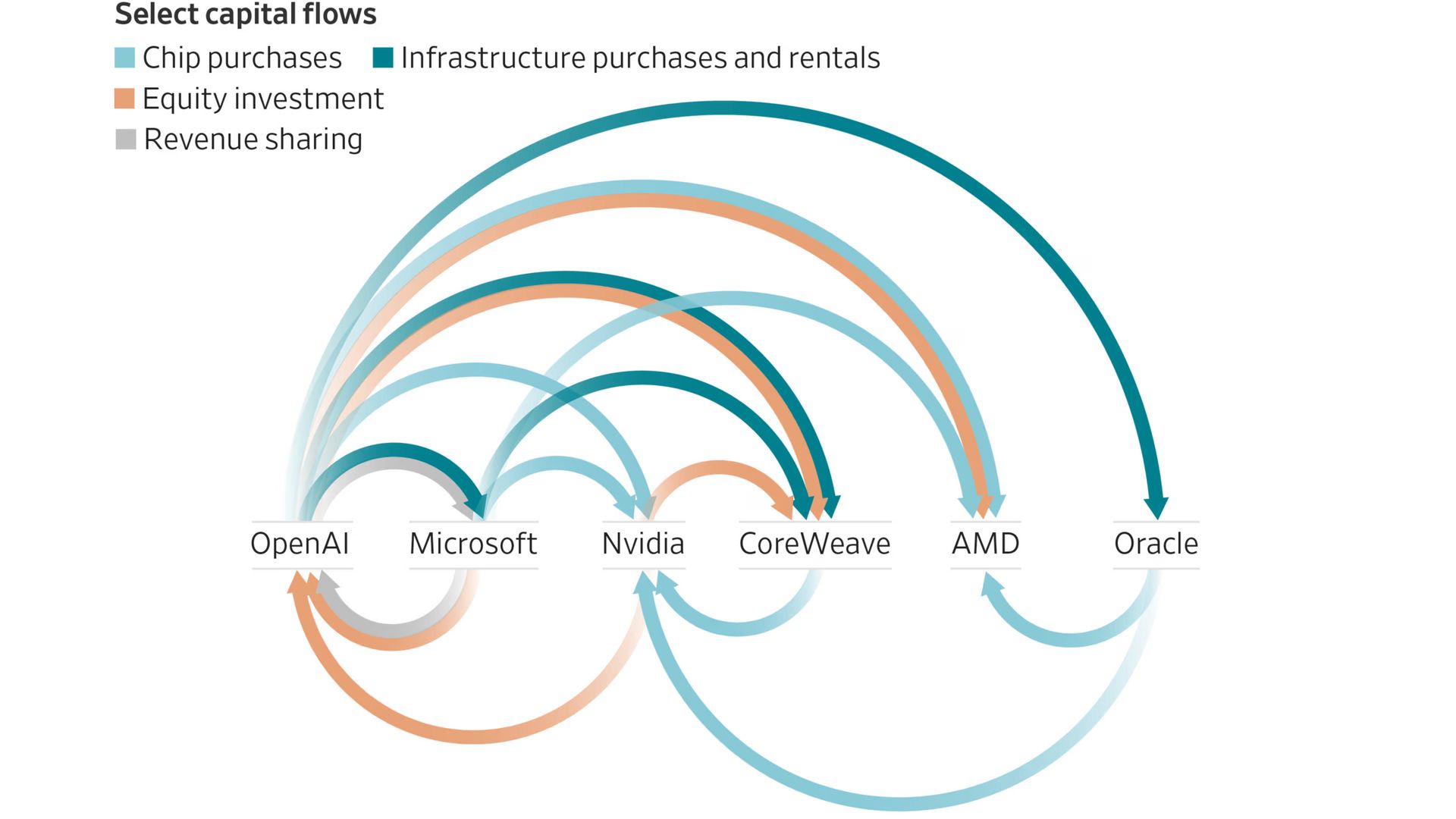
This is the part that makes people nervous. There is something happening called "circular spending." I will explain this with a simple story.
Imagine I give you $100 to open a lemonade stand. Then, you take that $100 and buy lemons from me. On my paper, it looks like I made $100 in sales. I look successful! But did any new money come into our group? No. We just passed the same $100 back and forth.
This is happening in the AI world.
Company A invests in Company B.
Company B uses that money to buy cloud services from Company A.
Company A records this as "revenue" (money earned).
This makes their earnings look amazing. When earnings look good, stock prices go up. But it is not always "real" money from new customers.
Learn How to Make AI Work For You!
Transform your AI skills with the AI Fire Academy Premium Plan - FREE for 14 days! Gain instant access to 500+ AI workflows, advanced tutorials, exclusive case studies and unbeatable discounts. No risks, cancel anytime.
2. The "Magnificent 7" And The Danger
The US stock market relies heavily on just a few companies. They call them the "Magnificent 7." These are the tech giants driving almost all the growth.
If you look at the S&P 500 (a list of the top 500 companies), about 75% of the gains come from these few AI companies. The other 493 companies are just sitting there, not doing much.
Why does this matter to you?
If one big company, like Openai, suddenly cannot pay its bills to a chip maker like Nvidia, the circle breaks. The stock prices could drop very fast. Since many people have their savings in these stocks, it could hurt the whole economy.
But does this mean AI is fake? Absolutely not. We just need to look at where the real value is.
Part II: Where Is The Real Value? (The Dot-Com Lesson)
People often compare today to the "Dot-Com Bubble" of the early 2000s.
Back then, internet companies were valued very high. Telecom companies laid down thousands of miles of fiber optic cables (the wires for the internet) under the ocean and ground. They thought everyone would use high-speed internet immediately.
But they were too early. People didn't need that much speed yet. They called it "dark fiber" because the cables just sat there, unused. The market crashed because the infrastructure was there, but the users were not.
1. Why Today Is Different

Today is not like the year 2000. The infrastructure we are building for AI is actually being used right now.
Think about ChatGPT. It has hundreds of millions of weekly users. People use it for coding, writing, and learning. Think about Claude. Developers use it every day to write software faster.
The demand is real. The "cables" are not dark. They are lighting up with activity.
2. The Two Main Buckets Of Value
To see if the bubble will pop, we need to look at two areas:
Consumer Tools: Apps like ChatGPT or Perplexity that normal people use.
Business Applications: Companies using AI to run their businesses better.
The consumer side is doing great. But the business side is a bit more complicated. This brings us to two very famous studies that came out recently.
Part III: The Tale Of Two Studies (MIT Vs. Wharton)
Recently, two major reports were published. One was from MIT (a very famous tech university) and one was from Wharton (a very famous business school).
The results were shocking because they seemed to say opposite things.
1. The MIT Report: The "Failure" News
MIT reported that 95% of AI projects inside big companies fail.
When I read that, I was worried. 95% failure sounds terrible. It sounds like AI is a scam.
But then I looked closer. The key word is "Enterprises."
These are giant companies that make billions of dollars a year. They have thousands of employees. They use old computer systems from 20 years ago.
Why do they fail?
Imagine trying to turn a giant cruise ship around. It takes a long time. Big companies are like cruise ships. They move slowly. They have too many managers. When they try to build custom AI, they get stuck in meetings and bureaucracy.
2. The Wharton Report: The "Success" News
Then, Wharton published their study. They said 75% of companies are seeing a positive return on investment (ROI).
Wait. How can one study say 95% fail, and the other say 75% succeed?
Here is the secret:
Wharton was looking at "off-the-shelf" tools. This means using tools that already exist, like ChatGPT or Perplexity, to help employees work faster.
MIT was looking at "custom development," where companies try to build their own AI brain from scratch.
3. The "Speedboat" Advantage

The most important thing I learned from these studies is this: Smaller companies are winning.
Wharton found that companies making between $50 million and $250 million (Medium-sized businesses) are seeing huge success. They have a 79% success rate.
Why? Because small and medium businesses (SMBs) are like speedboats.
They can turn fast.
They don't have 10 layers of management.
They are hungry for growth.
Big companies (the giant battleships) are 3 times more likely to get stuck and fail.
Part IV: What This Means For You (The Agency Owner)
If you run an AI agency, or if you do freelance AI work, this data is actually the best news you could hear.
Most people think, "I need to get a contract with Coca-Cola or Nike to be successful."
No, you don't.
The data shows that the big giants are failing. They are bad clients for AI right now. They take too long and they cancel projects.
The real money and the real success are in the Small to Medium Business (SMB) market.
The local real estate firm with 20 agents.
The marketing agency with 50 employees.
The law firm with 15 lawyers.
These people need you. They are willing to change. And the MIT report even said that when companies work with an outside vendor (that is you!), their success rate doubles.
So, do not worry about the "Enterprise failure." That is not your playground. Your playground is full of winners.
Part V: The 5-Point Survival Playbook For 2026
Now that we know the facts, we need a plan. I have created a 5-point playbook to help you survive any bubble crash and win big in the next few years.
1. Avoid The "Enterprise Trap"

I cannot stress this enough. Do not waste your time chasing giant corporations.
It might look cool to have a famous logo on your website, but it is a trap. Their sales cycles take 6 to 12 months. By the time they sign the contract, they might cancel the project because of the "95% failure" rate.
What to do instead:
Focus on the "Mid-Market." Look for companies that have:
Revenue between $1 million and $50 million.
Team size between 10 and 200 people.
These companies are big enough to pay you well ($5,000 - $20,000), but small enough to say "Yes" quickly.
2. Get Obsessed With ROI (Return On Investment)
The "hype" days are over.
Two years ago, you could say, "Look! It's magic AI!" and people would give you money.
Now, we are in a new phase. Business owners are smart. They ask, "If I pay you $10,000, how much money will I make back?"
You must prove the numbers. You cannot just sell "cool technology." You must sell "money saved" or "money made."
How to do this:
Before you even try to sell a chatbot or automation, calculate the value.
Example Prompt to Calculate ROI:
You can use this prompt in ChatGPT to help you prepare for a client meeting.
"I am pitching an AI automation service to a [Type of Business, e.g., Dental Clinic]. They currently have 2 receptionists who spend 4 hours a day each answering simple questions about appointments and pricing. The receptionists are paid $20 per hour.
Please calculate:
The total annual cost of this manual work.
The potential savings if I build an AI agent that handles 80% of these queries.
Create a simple table I can show the client to prove the Return on Investment (ROI) if they pay me $5,000 for the setup."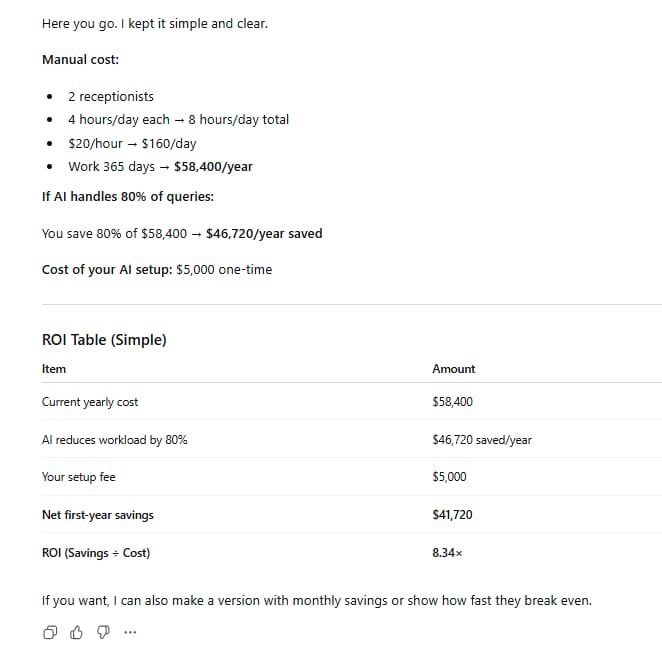
3. Shift From "Builder" To "Optimizer"
The MIT report showed that the few big projects that did succeed had one thing in common: They didn't stop after building.
Many agencies build a bot, hand it over, and leave. This is a mistake.
AI is not perfect. It makes mistakes. It "hallucinates" (makes things up).
The real value is in the optimization. This means monitoring the AI, fixing its bad answers, and making it smarter over time.
What to do:
Tell your clients, "Building the system is just the start. I will stay with you to make sure it gets smarter every month." This builds trust and gets better results.
Example Prompt for Optimization:
Use this prompt to analyze chat logs (remove real names first!) to improve a bot.
"Here is a transcript of 10 conversations between our customer support AI and real customers.
[Paste Transcripts]
Please analyze these conversations and identify:
Where did the AI give a vague or unhelpful answer?
Which questions did the AI fail to answer correctly?
Suggest 3 specific rule changes or knowledge base updates I should add to the system to prevent these errors next time."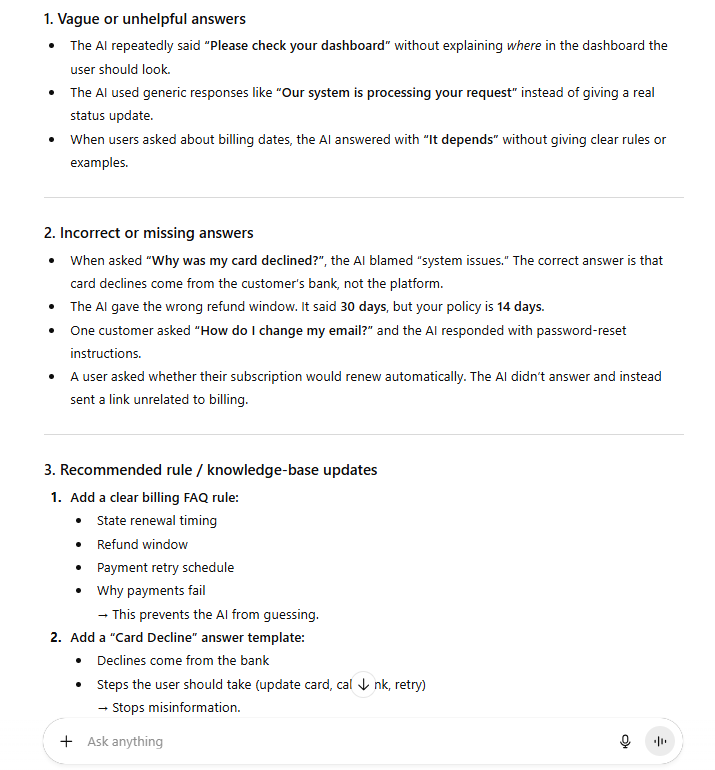
4. Become An "AI Transformation Partner" (Start With Training)
Sometimes, a business is not ready for a complex automation. Their data is messy. Their team is scared of AI.
The Wharton study showed that training provides the fastest ROI.
If you teach a team of 10 people how to use ChatGPT correctly, they can become 20% more productive immediately. That is huge value!
The Strategy:
Offer an "AI Workshop" or "AI Audit" first. It is cheaper and easier to sell than a $10,000 software build. Once you are in the door and they trust you, then you sell the development services.
Example Prompt to Create a Workshop:
"I need to create a 2-hour training workshop for a [Type of Business, e.g., Real Estate Agency] on how to use AI tools. The goal is to help them write listing descriptions and answer emails faster.
Create a detailed agenda for this workshop.
Include:
3 specific 'Wow' moments where I show them a live demo that impresses them.
A hands-on exercise they can do on their laptops during the session.
A list of 5 simple prompts I can give them as a 'take-home' gift."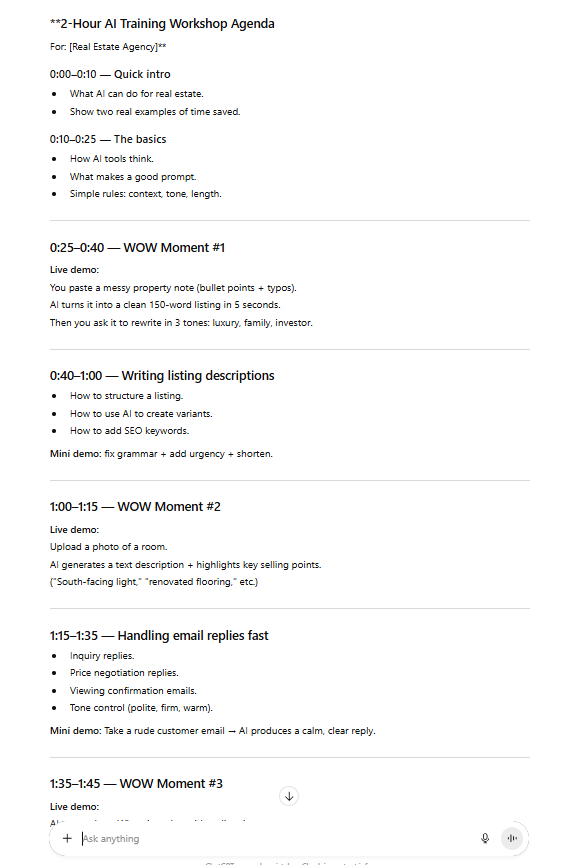
5. Make Retainers Your Default
This is your safety net.
If the economy gets bad, companies stop buying "one-time" projects. But they rarely cancel services that keep their business running.
You want Recurring Revenue. This means the client pays you a monthly fee (a retainer) to keep the system running.
How to structure it:
Do not just charge for "maintenance." That sounds boring. Charge for "Optimization and Evolution." You are not just fixing bugs; you are making the bot better every month.
Example Prompt for a Retainer Proposal:
"I have built an AI lead generation system for a client. I want to propose a monthly retainer of $1,000 to keep managing it.
Write a persuasive email section explaining what they get for this $1,000/month.
Focus on:
Weekly review of AI conversations to improve accuracy.
Updating the AI with their new monthly offers/prices.
Monthly reporting on how many leads were captured.
Make it sound like an investment, not a cost."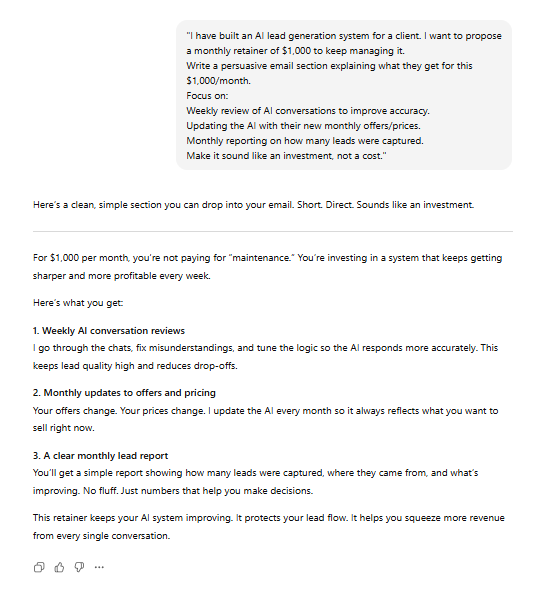
Part VI: Conclusion And Your Next Steps
I know the headlines about the "AI Bubble" can be scary. The stock market might go up or down. Some big companies might crash.
But let's look at the facts I shared with you:
Real people are using AI. The demand is there.
Small and Medium businesses are succeeding with AI. They are nimble and fast.
Agencies (like yours) are the bridge. Companies cannot do this alone; they need vendors.
If you focus on the basics - solving real problems, showing the money (ROI), and working with the right size of clients, you will be fine. In fact, you will be more than fine. You will be building a solid business while others are panicking.
The bubble might pop for the "Magnificent 7" stocks, but the utility of AI is here to stay.
Here is what I want you to do this week: Pick one point from the playbook above.Maybe you sit down and create a Training Workshop offer. Maybe you practice calculating ROI for your next potential client. Maybe you write a proposal to move a past client onto a monthly retainer.
Just take one step. The future belongs to the people who prepare for it. Good luck!
If you are interested in other topics and how AI is transforming different aspects of our lives or even in making money using AI with more detailed, step-by-step guidance, you can find our other articles here:
I'm Revealing The Marketing Tools They Gatekeep In $5k Courses
AI Automation: Your Secret Weapon for Content and SEO Success*
*indicates a premium content, if any
How well did this guide cover the topic of "making money with AI"? |
Reply